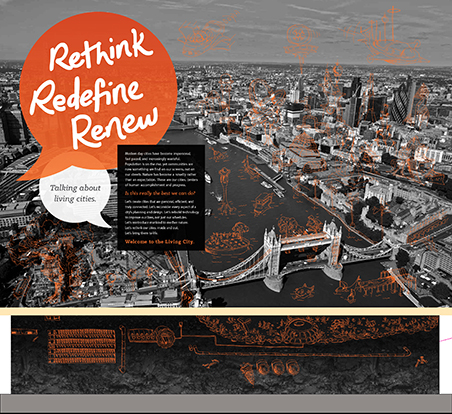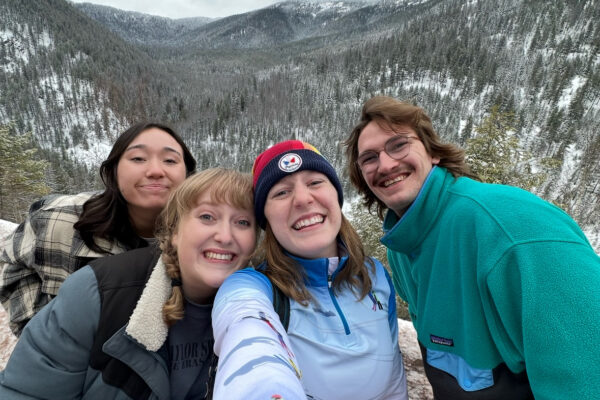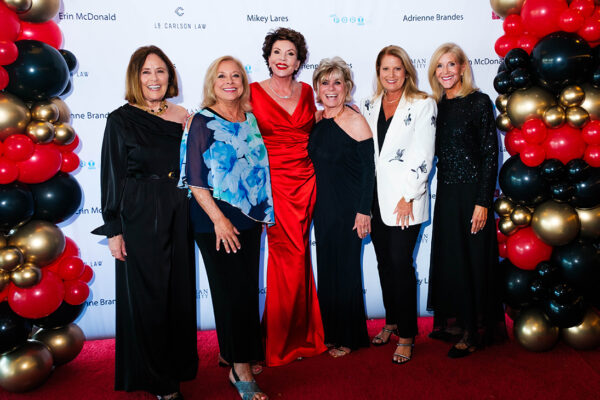
Fantasy-like doodlings atop cityscape photography are used throughout a project created in London this summer by Chapman University graphic design students.
Engineers can build anything, but they can’t always explain everything. Thankfully, they have creative friends in the graphic design world who can.
That was the job of 21 Chapman University students who traveled to London this summer as part of Art 393 Sustainable Design, offered in the Department of Art. The class is taught by Eric Chimenti, chair of the
Department of Art
and head of the graphic design program, and Ron Leland, adjunct faculty member and creative director of his own design firm, Real Life Brand Architecture.
At the invitation of the London-based design firm
Buro Happold
, the team of graphic designers and computational science students tackled the real-world project of creating a dynamic exhibition presenting the firm’s conceptual ideas about integrated urban design.
The result was “The Living City Exhibition,” a free-standing exhibit that will be displayed at the Buro Happold’s London offices and reprised in digital form online. A duplicate of the display ultimately destined for Buro Happold’s Los Angeles office will also be on exhibit in Chapman’s Guggenheim Gallery from Monday, Nov. 4 through Friday, Nov. 8.
Buro Happold has often hosted Chapman design students during the past several summers, engaging their input on some of the firm’s work and offering professional critiques of the students’ projects and portfolios. But this summer was different for students, as Buro Happold had a real need for the display, Chimenti says.
“They knew us from previous visits and they knew what our students could do,” he says.
The challenge to students was to distill the engineers’ futuristic thinking and current innovations into a display that could engage policymakers, the community, elected officials and other stakeholders in a discussion about how to plan tomorrow’s cities.
Job one during the five-week study course was research, says Kiera Hoefle ’15, a graphic design major from Middlebury, Vt.
“We looked at a whole lot of their projects. But they speak in very technical terms. Our job was basically to break that down so that the average person could understand what they were talking about,” Hoefle says.
And all while keeping the client happy, says Deena Edwards ’14, a graphic design major with a minor in advertising.
“We were working with a real client who was going to change their mind, and or want different things,” Edwards says. “It was challenging because things changed halfway through our project. I was surprised how different the project turned out. It definitely evolved, but it was a great experience.”
The core of the final display is a colorful series of 7-foot columns that viewers can peruse like life-sized sketchbooks created in a template of jelly bean colors, from orange to turquoise. Doodled ideas are superimposed atop cityscape photographs. Stats and factoids are penciled onto the images in a font resembling hand-printed lettering. A portion of each column invites various forms of viewer participation – from “How do you want to communicate with your government?” to “Doodle a smarter lamppost.”
Two computational science students also went on the trip and are currently creating the website that will take the exhibit digital.
And while visitors to the Guggenheim won’t get to pick up a pen and doodle, since this exhibit will be sent to Buro Happold in Los Angeles they will have another bonus, Chimenti says. All the students’ early sketches and idea maps that led to the final work will be included in the gallery display.
Read more about the project at the
Buro Happold
blog.
Students go to town via innovative exhibit peeking into cities of the future





Add comment